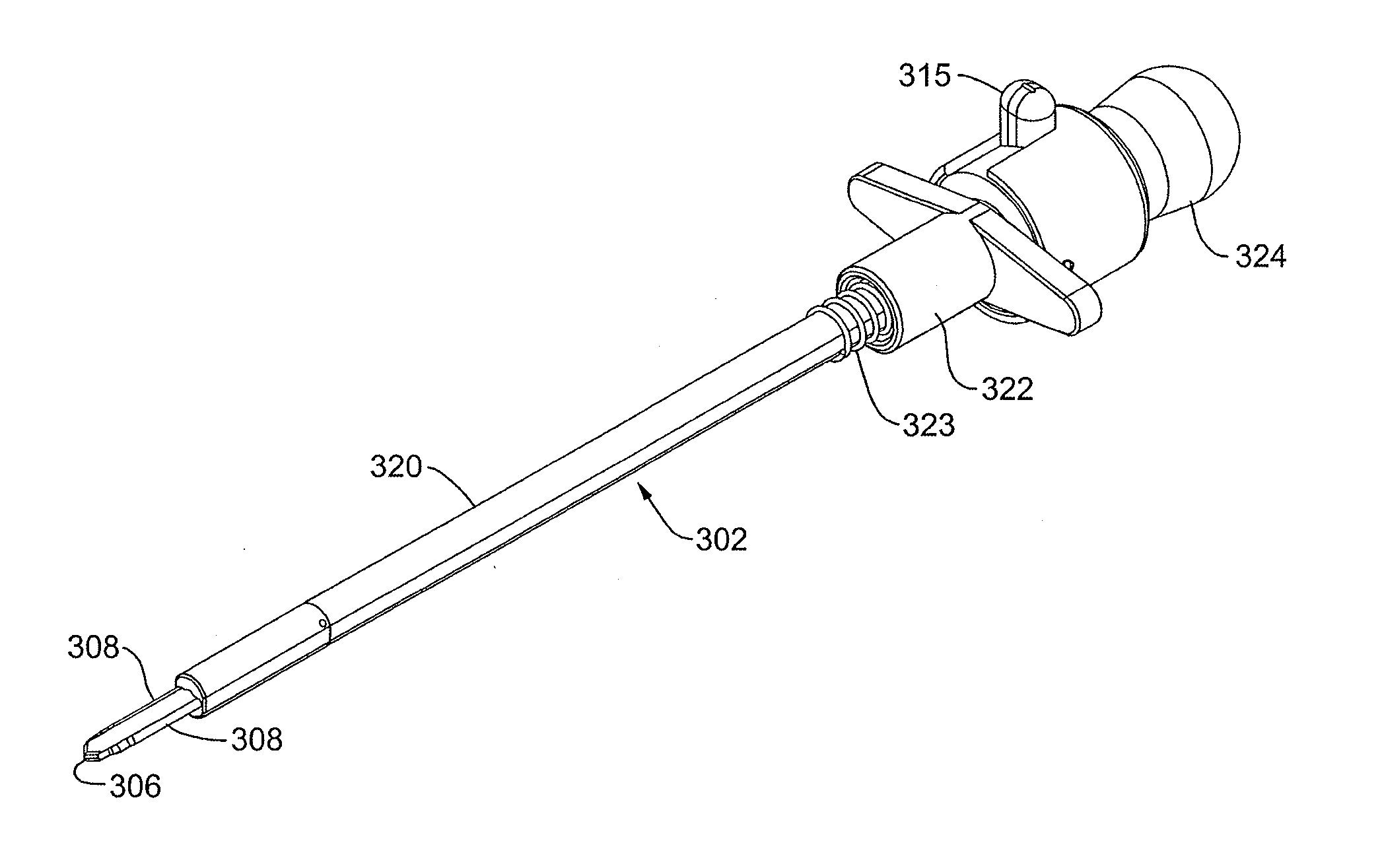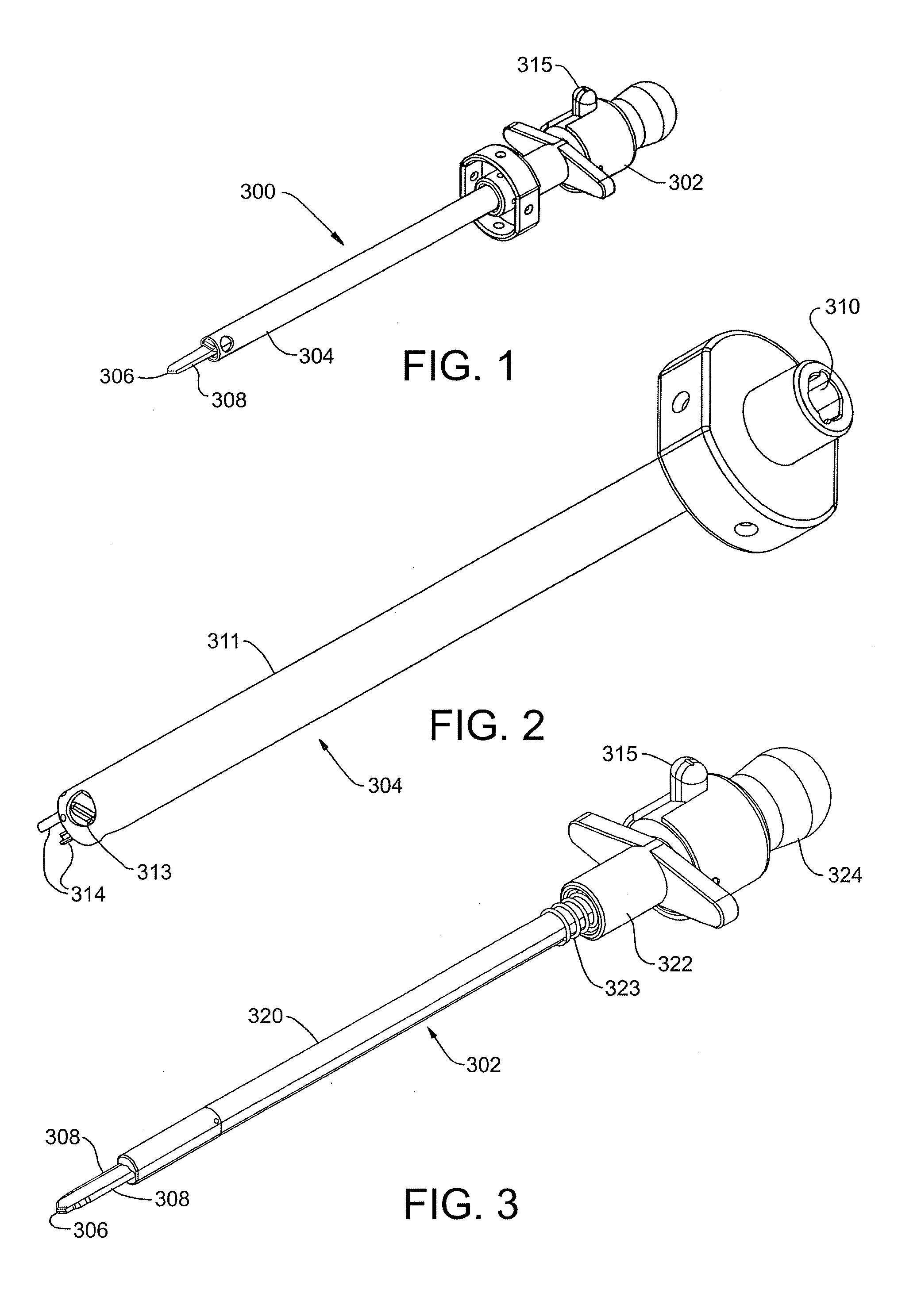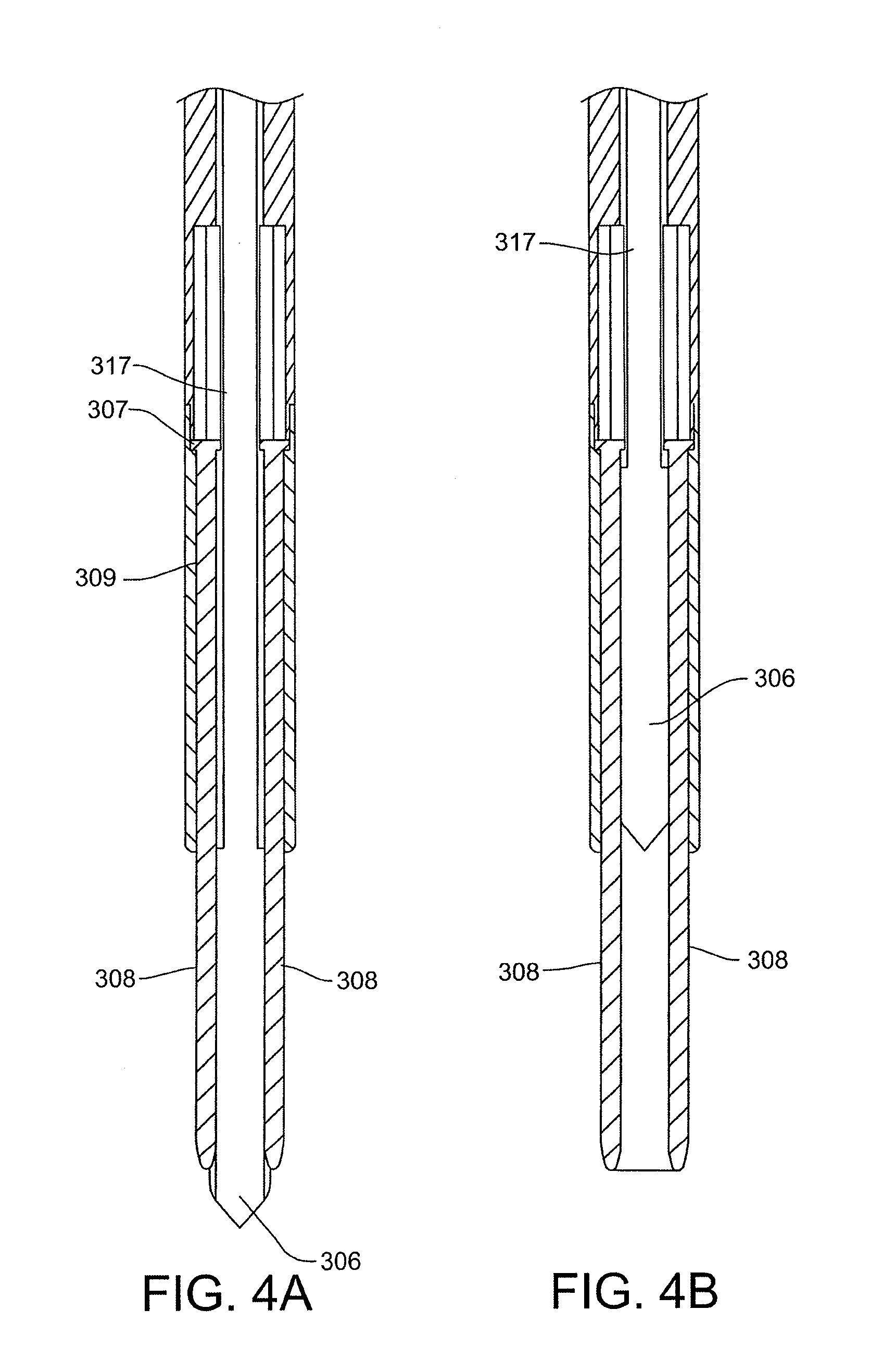Apparatus and method for forming pilot holes in bone and delivering fasteners therein for retaining an implant
a pilot hole and bone technology, applied in the field of orthopedic medicine and surgery, can solve the problems of rotator cuff damage, a potentially serious medical condition, complex mechanical properties of the rotator cuff muscles,
- Summary
- Abstract
- Description
- Claims
- Application Information
AI Technical Summary
Benefits of technology
Problems solved by technology
Method used
Image
Examples
Embodiment Construction
[0035]The following detailed description should be read with reference to the drawings in which similar elements in different drawings are numbered the same. The drawings, which are not necessarily to scale, depict illustrative embodiments and are not intended to limit the scope of the invention.
[0036]Apparatus and methods as described in this disclosure can be used to position and deploy fasteners or staples to attach tissue and implants to bone. In at least some applications, the staple is generally flexible and include a pair of arms connected by a bridge with the arms having trunk portions thereon. Staples can include those disclosed in co-pending applications U.S. Provisional Application No. 61 / 577,626 filed on Dec. 19, 2011, Attorney Docket No. 10322-712.100 entitled, “FASTENERS AND FASTENER DELIVERY DEVICES FOR AFFIXING SHEET-LIKE MATERIALS TO BONE OR TISSUE”; U.S. Provisional Application No. 61 / 577,632 filed on Dec. 19, 2011, Attorney Docket No. 10322-713.100 entitled, “FAST...
PUM
 Login to View More
Login to View More Abstract
Description
Claims
Application Information
 Login to View More
Login to View More - R&D
- Intellectual Property
- Life Sciences
- Materials
- Tech Scout
- Unparalleled Data Quality
- Higher Quality Content
- 60% Fewer Hallucinations
Browse by: Latest US Patents, China's latest patents, Technical Efficacy Thesaurus, Application Domain, Technology Topic, Popular Technical Reports.
© 2025 PatSnap. All rights reserved.Legal|Privacy policy|Modern Slavery Act Transparency Statement|Sitemap|About US| Contact US: help@patsnap.com



